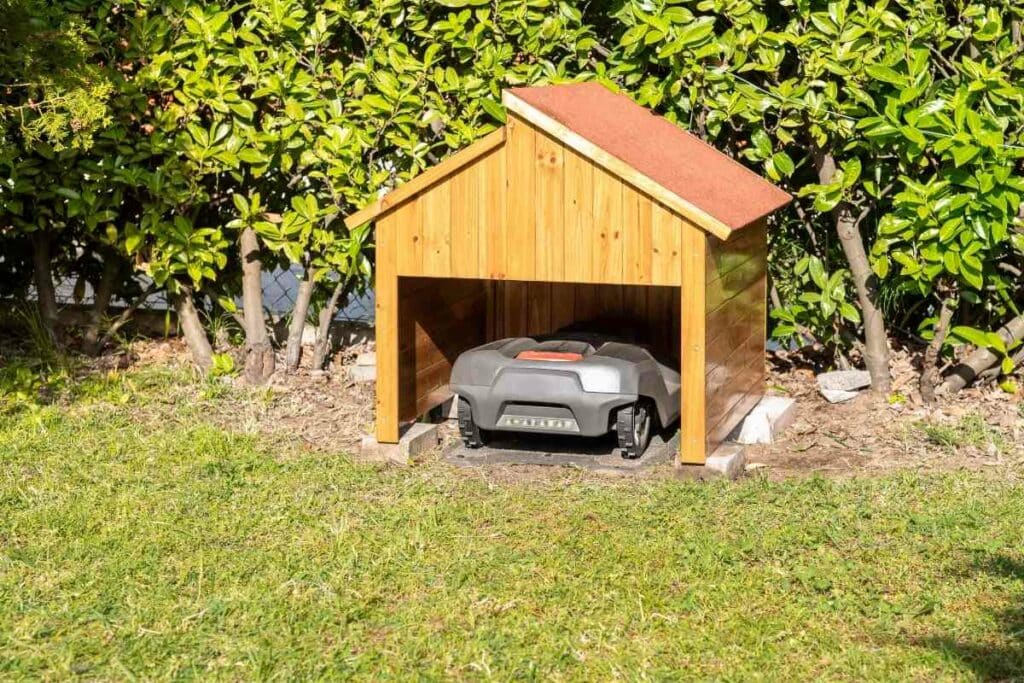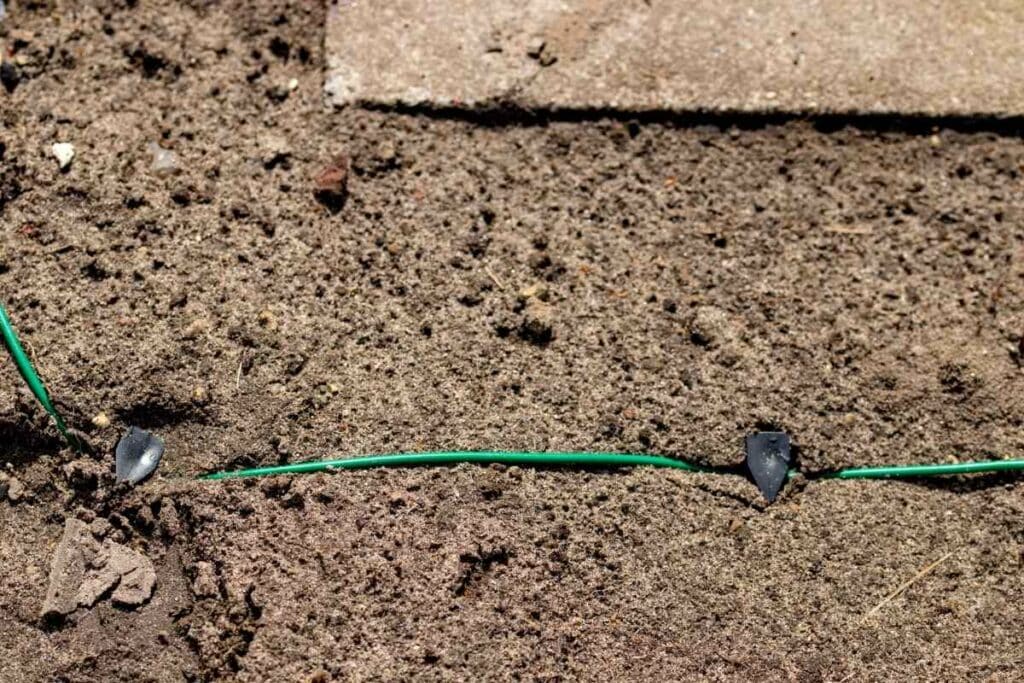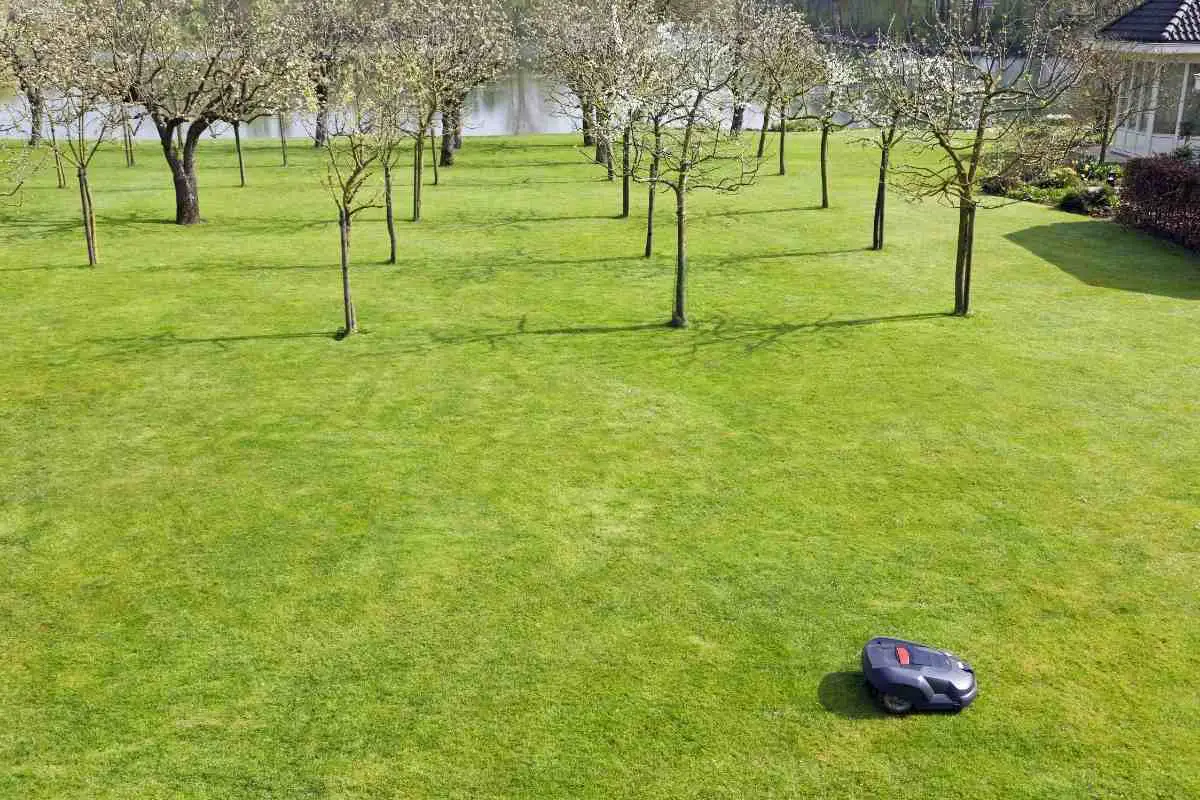A boundary wire may seem like an afterthought or hassle, but the vast majority of robotic mowers on the market are dependent on a boundary wire for their navigation.
The perimeter wire is actually a giant antenna that sends a continual signal telling the robot mower where it can mow and where it cannot. Installation of this wire can be complicated and arduous, but the robotic mowers that are wire-free are very expensive and out of reach for most consumers.
In this short article, we will explain the importance of the perimeter wire for robotic mowers and share some of the alternative technologies that are being used to help autonomous mowers navigate effectively.
For now, a boundary wire is essentially a default feature of robot mowers.
Like young children, your robot mower performs best with firm boundaries, within which they can navigate freely to mow your lawn.
This wire is used to outline the boundary of the grassed area to be cut and can work with any size or shape of lawn. It may not be what you expect when you see im
How does boundary wire work with your robotic mower?
Though robotic mowers are smart, they aren’t yet smart enough to navigate autonomously. These mowers will travel and cut grass in a straight line until the boundary wire stops it and makes it change direction.
A regular robotic mower keeps mowing, running up to the boundary, and changing direction until it has covered the entire lawn.
It really is that simple.
The boundary wire is connected to the mowers charging station and sends a continuous signal
Boundary wire is connected to the charging station of your robotic mower, forming a continuous loop around the perimeter of the lawn.

The center of the wire is made of copper which conducts a UHF signal that is unique to the mower and radiates through the wire in all directions to the robot so it can detect its boundary at all times.
Manufacturers make robotic mowers with boundary wire because they are effective
As long as the boundary wire remains intact, this system is robust, reliable, and effective.
The technology is proven and reproducible and prevents the mower from mowing areas like flowerbeds or gravel paths by mistake.

As this technology is widely adopted, boundary wire robotic mowers have dropped in price. This means that the vast majority of robot mowers on the market will use this technology.
But boundary wire adds complexity to setting up robotic lawnmowers
It’s easy to understand why you would want to know if all robot lawnmowers need a boundary wire as installing it can be a real headache.
This is because the boundary wire has to be precisely installed; mistakes will mean that the mower does not mow adequately or may even fail to operate.
With large or complex lawns, it’s easy to get things wrong. Plus you can make mistakes when securing boundary wire with pegs, stage, beneath stones, or even by burial.
If that wasn’t enough, just a single break in the wire anywhere along its course brings your robotic mower to a standstill.
Wildlife chewing on the wire, yardwork, or vigorous play in the backyard can easily do this. The break has to be located and repaired with a connector, or the entire wire needs to be reinstalled.
Alternatives to boundary wire do exist but are not widely available
The technology required by robotic mowers to navigate autonomously is currently in development with one or two robotic mowers that do not use wire being available to buy.
Alternative technologies are still extremely expensive and do not deliver the consistent performance that is required to keep a robotic mower mowing grass only.
For now, manufacturers are largely sticking to what they know and adding additional features and functionality to boundary wire robotic mowers.
Here are some examples of alternatives to a boundary wire
Novel navigation techniques and technology for robotic mowers are relatively immature.
Some have been adapted for sectors such as agriculture that use navigation technology for sowing or harvesting crops.
Others are entirely novel and have a long way to go before becoming mainstream. Here are the alternatives to look out for:
Real-time kinematic GPS corrects errors in GPS so a mower can mow accurately
This is an assisted form of GPS that provides centimeter accuracy compared to standard GPS that can be out of position by several meters which is unacceptable for a robotic lawnmower.

Real-time kinematic GPS (RTK GPS) uses the navigation technology used by combine harvesters and other agricultural machinery to get your lawn mowed accurately.
RTK GPS uses a base station that helps the mower orient itself without requiring a boundary wire. It can then use an onboard GPS transceiver to navigate according to a mapped outline of the lawn.
Beacons help a mower orient itself without a boundary wire
Some manufacturers are experimenting with using a system of staked beacons as an alternative method of delivering a boundary signal.
Surveyors and civil engineers use these radio beacons because they deliver high accuracy. Location beacons can also be used to assist and correct GPS-guided mowers.
An onboard camera could solve wire-free robotic mowing
Manufacturers have developed robotic mower prototypes that can navigate visually, using an onboard video camera and artificial intelligence that enables the mower to ‘see’ grass and other garden structures.
Like self-driving cars, visual navigation is a fast-developing area of robotics that requires complex software and is extremely expensive.
Though this type of robot mower is years away from being commercially launched, there are several promising prototypes.
Watch this space!
Rounding up
Though the boundary wire removes some of the mystery of how autonomous mowers work, it is effective at ensuring that you get a perfectly cut lawn, without the effort of doing it yourself.
If installing or adjusting a boundary wire is a hassle, why not get a professional to install your boundary wire and set up your mower for you?
Until alternative technologies become available, it seems that that trusty spool of wire is here to stay!
